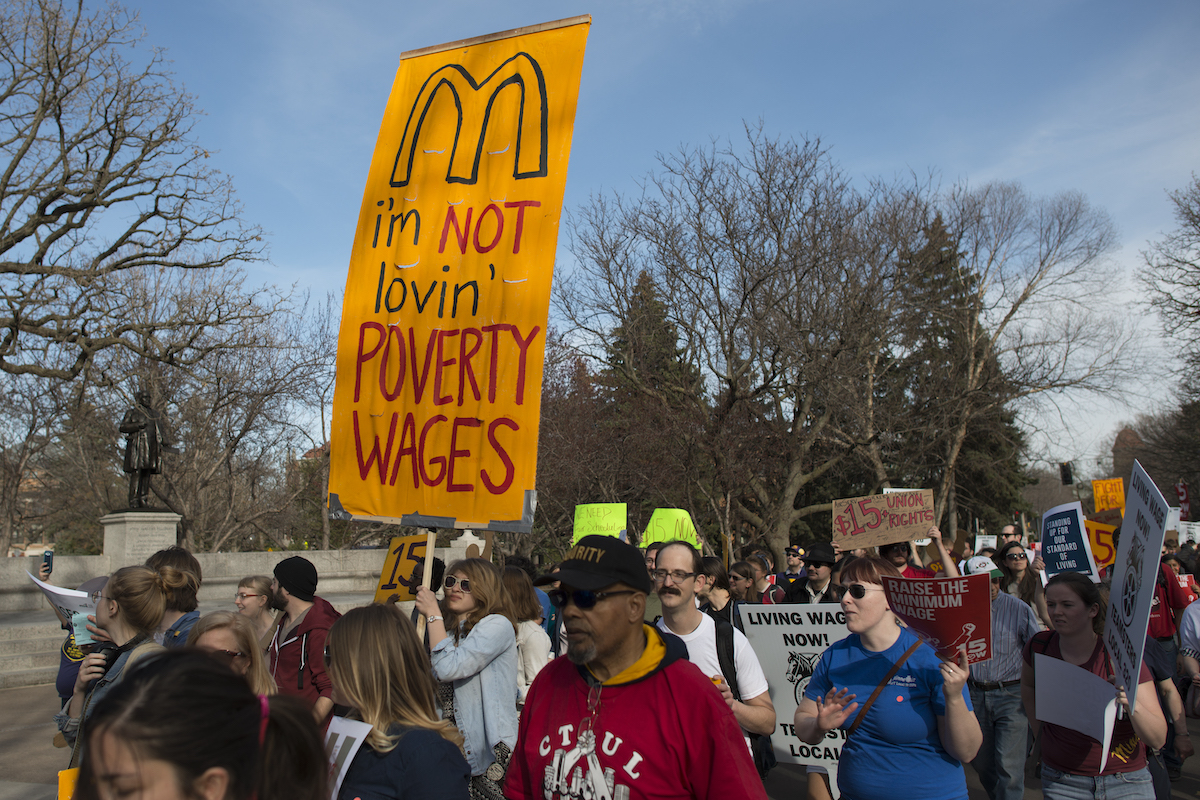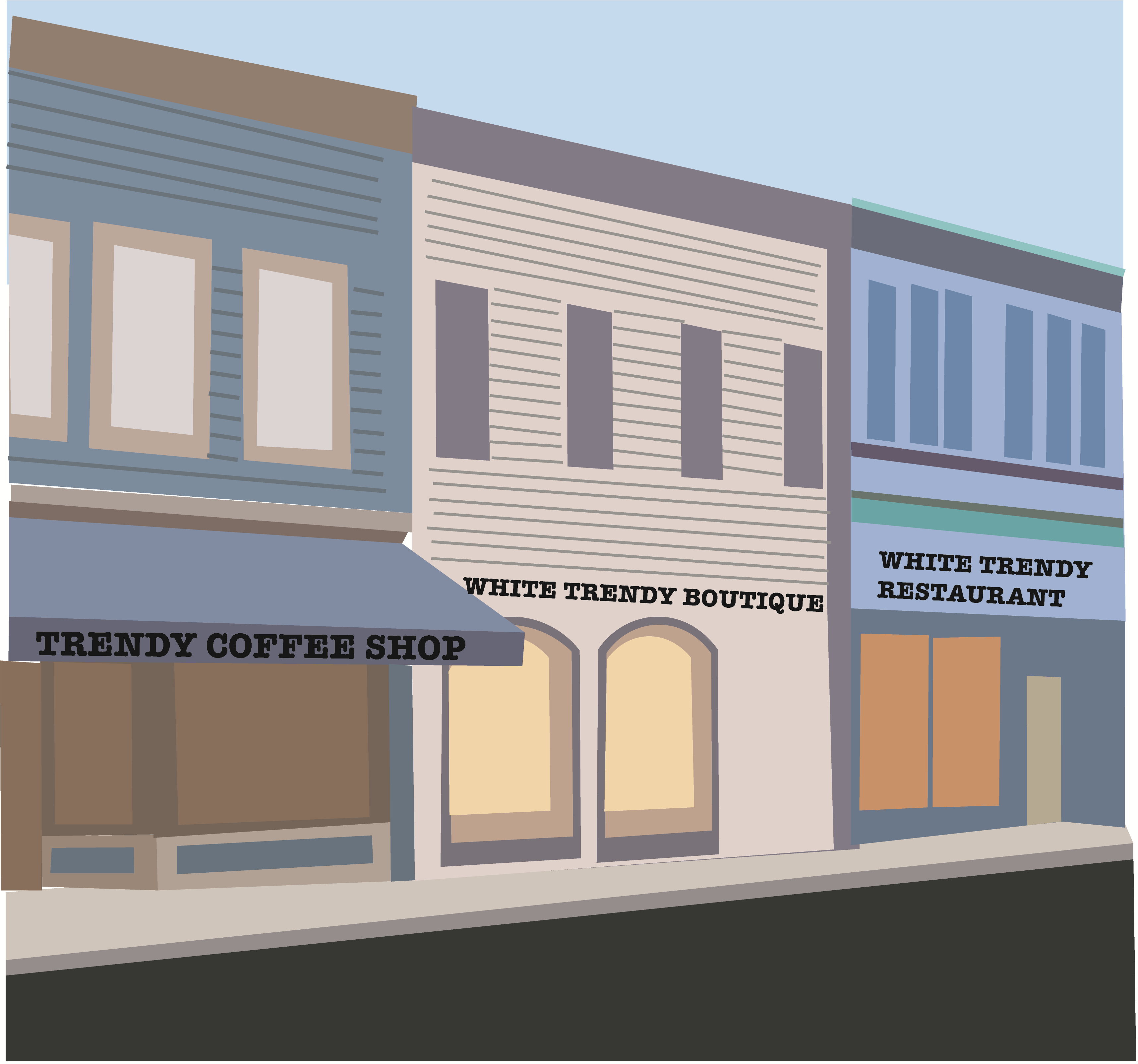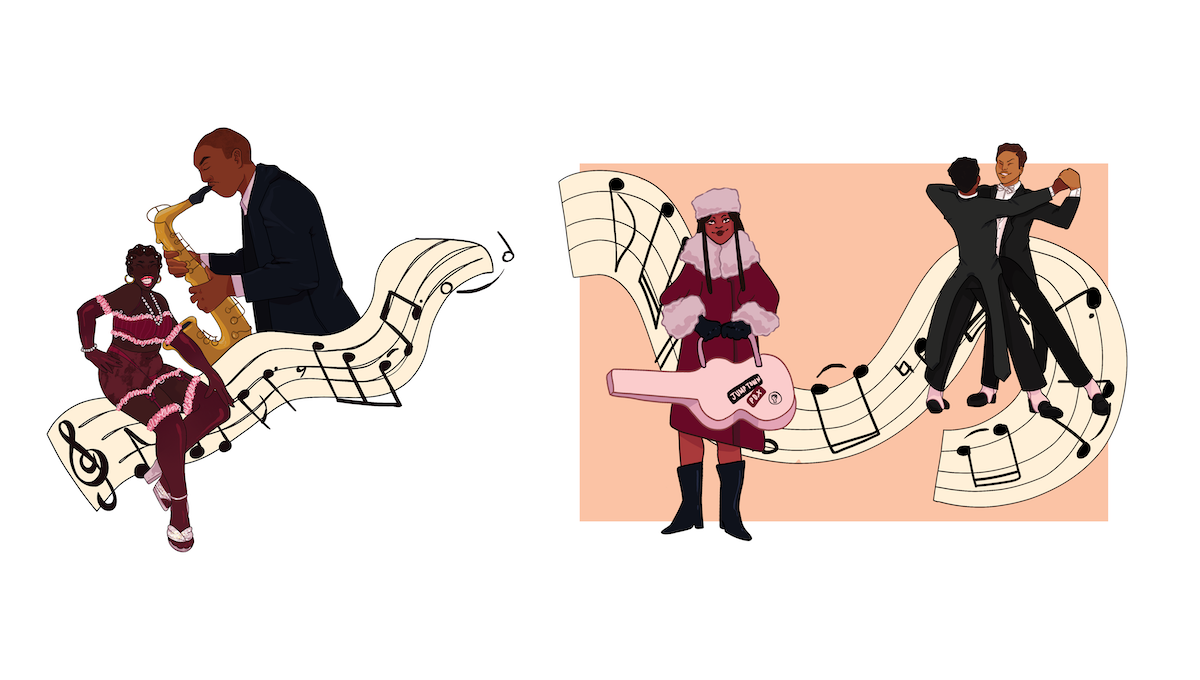Hello, reader, and welcome to the Vanguard History Corner! This reoccurring column will whisk you through the little-known and forgotten history of the Pacific Northwest, as I endeavor to reconnect our past with our present.
The past few decades, far from being “the end of history” as some have described it, have exposed some of the deepest fault lines in our national identity—the financial crash of 2008, rising income inequality and, most recently, the coronavirus pandemic have all shaken our collective conscience perhaps more than any time since the Great Depression. Union density has steadily fallen since the 1960s and only about 10.3% of American workers are union members today, a historic low.
But all hope is not lost. Nearly 6,000 workers at one Amazon warehouse in Bessemer, Alabama are voting on whether or not to form a union, after years of complaints about unsafe working conditions and oppressive productivity demands. As we stand on the precipice of the possibly most important union drive in recent history, it’s important to remember how we got here. Workers trying to unionize today stand on the shoulders of giants, and if the labor movement is to come to power again it must learn the lessons of the past.
While discussion of unions and organized labor might often focus on the industrial Northeast and Midwest, the Pacific Northwest has had its fair share of labor actions throughout its history. Three such incidents shed light on the current labor struggle: The 1934 longshoremen’s strike, the 1960–64 run of the Portland Reporter and the Powell’s union campaign.
1934 longshoremen’s strike
On May 9, 1934, in the depths of the Great Depression, longshoremen working at ports across the West Coast walked off the job to strike for better wages, union recognition, reduced hours and more. The workers were members of the International Longshoremen’s Association (ILA), and they were determined to win union representation. Longshoremen—the workers who loaded and unloaded cargo ships at ports—were and are the backbone of waterfront shipping. The longshoremen’s strike was supported by much of Portland’s working class, and shipping companies had a difficult time finding non-union workers, otherwise known as scabs, willing to cross the picket line to work.
Neither the shipping companies nor the government took kindly to the work stoppage. As Michael Munk wrote in The Pacific Northwest Quarterly in his article “Portland’s ‘Silk Stocking Mob,’” for 82 days “every port from Bellingham to San Pedro” shut down entirely. Maritime commerce ceased, grain and lumber exports were disrupted and about 50,000 workers in the state lost their jobs as a result of the strike.
Business owners would often try to get strikebreakers through picket lines, escorted by police, in order to keep business moving. In the 1934 strike, however, it wasn’t police that were the biggest impediment to workers, but rather so-called “citizens committees”—citizen vigilantes trained to break the strike. Portland police limited their actions to escorting scabs on their way home, refusing to directly help the businesses like other police departments often did. This made business leaders furious. Arthur Farmer, the maritime commerce manager of the Portland Chamber of Commerce, begged government officials like Governor Julius Meier to invoke martial law and call in the National Guard, suggesting “zoning off a section of the city and putting it under military control.”
The striking workers held strong, largely due to the support from the working-class and unemployed people of Portland. The Oregon Unemployment Councils, organized by the Oregon Communist Party and the Oregon Workers Alliance, fought to persuade unemployed workers not to cross the picket line. Delegates from the Unemployed Councils told an ILA meeting they “had 30,000 men to help the strikers” if the need arose. Students from the University of Oregon, Reed College and other universities pledged to “fight all scab-herders” and “prevent students from strike-breaking.” The strike succeeded, Michael Egan concludes in his 1975 thesis “That’s Why Organizing Was So Good,” because of the Unemployed Councils; workers from everywhere in the city stood in solidarity with the strikers, bolstering their strength against the class of business owners determined to get them back to work.
In the end, in Portland and elsewhere, striking workers across the West Coast won wage and hour improvements, a joint hiring hall and coast-wide union recognition. Today, Oregon International Longshore and Warehouse Union Locals Portland 8 and 40, North Bend 12, Astoria 50 and Powells 5 all stand on the shoulders of the 1934 strikers. May we let their success serve as a lesson on the power of militant unionism, as well as the power of solidarity and collective action.
The Portland Reporter
In 1950, multi-millionaire Samuel Newhouse purchased The Oregonian. Newhouse had been buying up newspapers all across the country, and his purchase of The Oregonian wasn’t a real surprise to anyone. However, there was another daily paper in Oregon, called The Oregon Journal—and Newhouse was looking to buy that one, too. Talks had begun for Newhouse to purchase The Oregon Journal after its founder Philip Jackson died, leaving ownership of the paper up in the air. If Newhouse bought the Journal, of course, that would give him ownership of both daily newspapers in Oregon, essentially giving him a monopoly on news in the state.
Management at The Oregonian decided to lay off three quarters of the stereotypers—the people who cast the newspaper’s giant printing presses—working at the company in November 1959; Newhouse was looking to replace the old machines with new ones that only required one worker to operate instead of four. Soon after, on Nov. 10, the Stereotypers’ Local 49 called a strike, followed by many of the newspaper’s writers. All told, the strike included 850 workers from 11 unions.
Things escalated from there. The Oregonian hired professional strikebreakers from Texas. In Jan. 1960, 10 Oregonian delivery trucks were blown up by supporters of the strike. Strikebreakers brought guns with them, prepared for anything. Time magazine even reported on the struggle, calling it “a finish fight, eyed closely…by newspaper publishers all over the [United States].”
On Feb. 11, 1960, a group of striking Oregonian writers founded a new paper called The Portland Reporter. They used a salvaged printing press from 1890, and worked out of a former Wells Fargo stable at 1714 NW Overton St. The Reporter quickly began to produce 60,000 issues per week, while The Oregonian’s circulation dropped by 70,000. The Oregonian clearly suffered from the loss of talent; the paper was riddled with typos, errors and missed deliveries during the strike, and one reader wrote to the editor, “It’s obvious your best reporters, photographers, pressmen, etc., are putting out the new paper.”
The Reporter couldn’t compete against the established papers in town forever, though, and, by 1963, it had accrued a debt of $536,000. Some reporters were blacklisted from writing in any newsroom ever again, while others were able to cross the picket line and get their old jobs back. The Reporter published its last issue on Oct. 1, 1964, and The Oregonian and The Oregon Journal both banned unions from their workplaces. In November of that year, the National Labor Relations Board declared the 65-month-long strike illegal.
Of course, there is no such thing as an illegal strike—only an unsuccessful one. The writers, photographers, delivery drivers and stereotypers for The Portland Reporter were simply beat by organized power and money. Today, the Oregonian remains the largest newspaper in Oregon after Sam Newhouse was successfully able to monopolize the market. The defeat of the Oregonian strike is a sad story, but it is one we can learn from. The Oregonian still managed a print run of around 170,000 during this period, more than doubling the Reporter’s run; there was no way the Reporter could have competed with that kind of revenue gap. Where the 1934 strikers were bolstered by solidarity with other workers, the Oregonian strikers were defeated by a monopolized business interest on one side and a lack of public support on the other. That is an untenable situation for building workers’ power, and it must be changed to avoid a similar result in the future.
The Powell’s union campaign
Thanks to a Master’s thesis, a list of sources and an accompanying interactive timeline by PSU student Ryan Thomas Wisnor, we have a free, easy-to-understand account of the Powell’s union campaign, furnished by Portland State’s very own history department. Powell’s, of course, is the famous new and used indie bookstore chain that’s been in Portland since the 1970s—but that’s not where our story begins.
In 1987, a group of Powell’s employees formed a collective called the Powell’s Employees’ Association, an organization meant to “improve communication between management and staff.” In 1990, following a disastrous holiday season, Powell’s laid off two dozen employees, prompting workers to unsuccessfully attempt to unionize. They met with organizers from the Oregon Public Employees Union, but never garnered a majority of workers’ votes to win a union election. Instead, the workers presented Powell’s owner Michael Powell with a list of demands, including “a consistent wage policy, clear job descriptions, and a grievance procedure.”
Early attempts at union organizing had failed, according to Powell’s employee and founding member of the Powell’s union Mary Winzig, because “they tried to organize just the big Burnside store,” neglecting the rest of the company’s workers. Even though those previous campaigns had failed, however, Winzig describes her experience with orientation and HR: “the human resources guy…said, ‘I just want you to know that there was a union drive a couple of years ago, but we don’t need a union here.’” After he said that, Winzig recalls, she knew the company was scared of a union—and it was time to start one.
The difference between this union effort in 1998 and previous efforts, Winzig notes, is that they made an effort to have one-on-one conversations with their coworkers about their concerns. “Friends of mine and I talked about how we needed a union,” she said. “Many of us felt we had nothing to lose. We were making crap wages, and even if we got fired, we felt we could always make crap wages somewhere else.”
The union activists reached out to the ILWU (the Longshoremen’s Union) to help them organize. Michael Powell and other members of management cautioned them against unionizing, calling the union a “third party,” even though they once confused the ILWU with its sister union on the East Coast, the ILA. Powell told The Oregonian in an interview at the time, “They’ve got to ask themselves whether this is really in the best interests of the company.”
In the end, the union won: the final vote total in the union election was 161 for the union and 155 against. After the success, eleven strikes and 10 charges in court against Powell’s for unfair labor practices, the union finally won a contract in 2000. Since then, ILWU Local 5 has represented workers in every Powell’s store and warehouse.
Lessons learned
The actions of organized labor in the past are still very relevant to the present. Powell’s workers likely would not have been able to unionize with the ILWU without the struggle of the 1934 waterfront strikers; conversely, The Oregonian’s monopolization of Oregon state media would probably have been slowed or stopped if the 1959–64 strikers were successful.
We can also take lessons from the previous workers’ successes and failures: the 1934 strikers succeeded because they mobilized the rest of the city in solidarity. Powell’s organizers succeeded because they took the time to speak to their fellow workers one-on-one to understand what they were concerned about. The Portland Reporter failed in large part because they couldn’t muster public support and the resources to withstand a sustained attack from business. If we want to revive the labor movement in the 21st century, it’s essential to learn from our history. Let’s hope Amazon workers in Bessemer, Alabama are successful in their fight to organize—and let’s hope they can emulate the wins, and not the losses, of the past.








